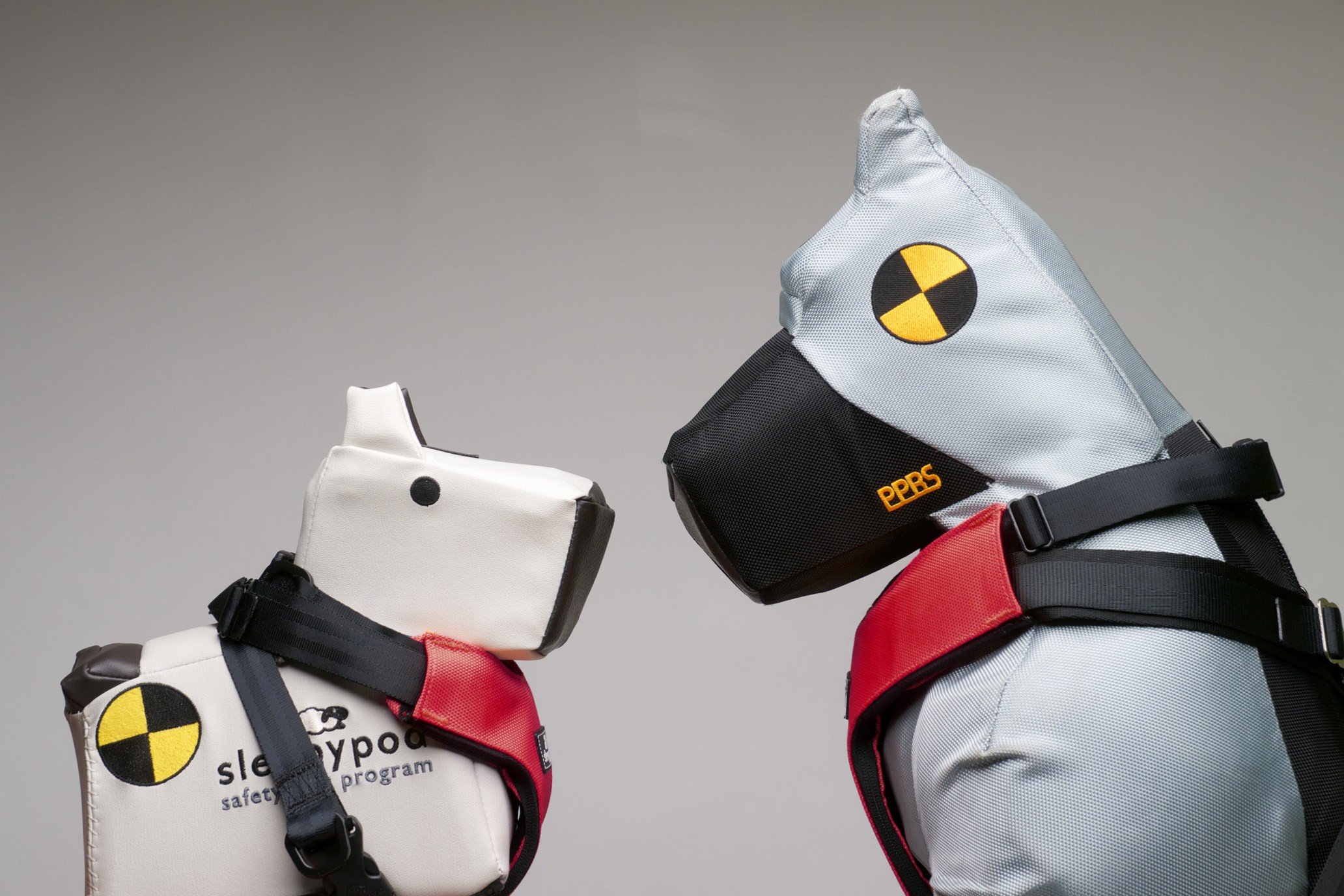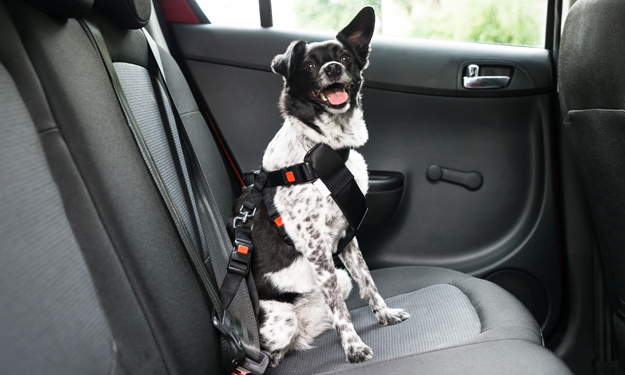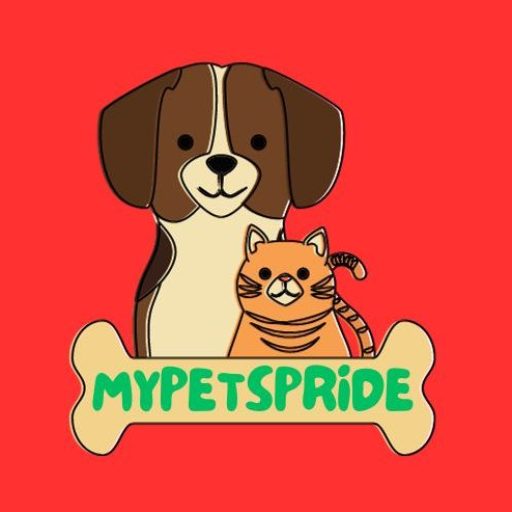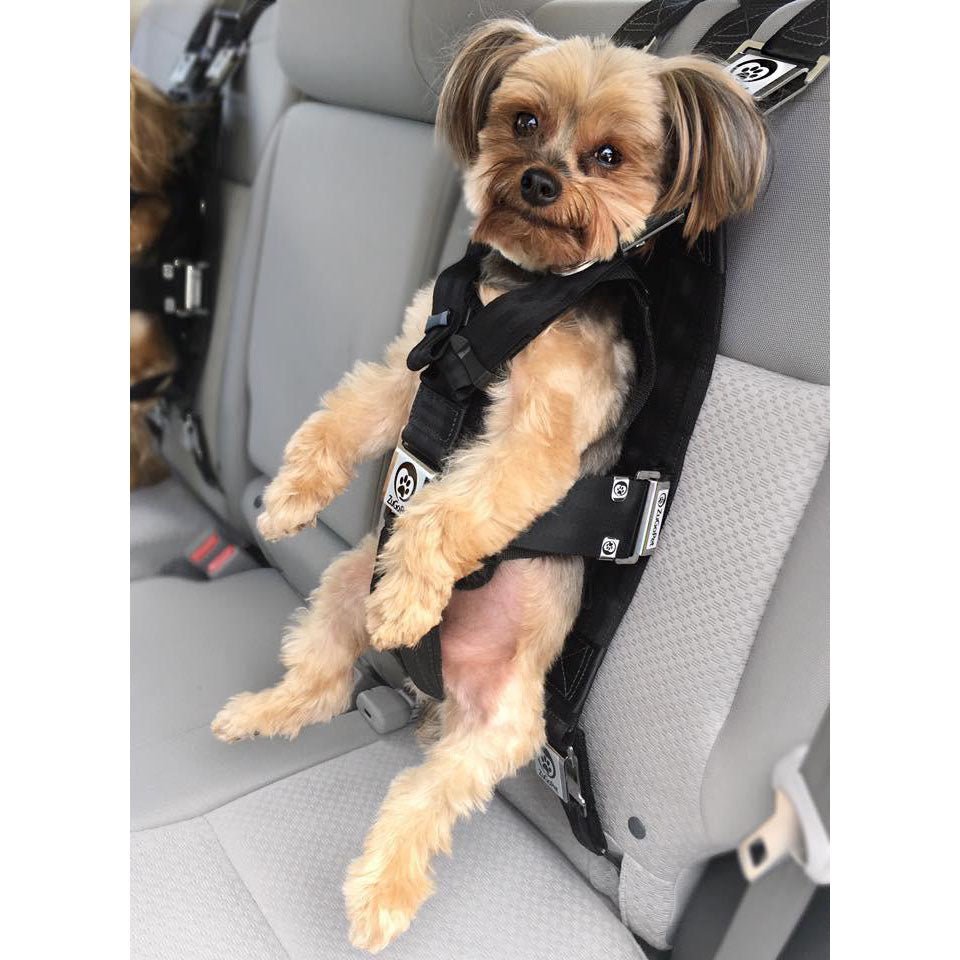Dog seatbelts and car restraints are essential for keeping your furry friend safe and secure during car rides. These devices provide a necessary level of protection, preventing your dog from getting injured or causing accidents while in the vehicle.
Whether you’re going on a short trip or a long journey, using a dog seatbelt or car restraint is a responsible choice that ensures the well-being of both your pet and everyone in the car. We will explore the importance of using these safety measures, the different types available, and how to choose the right one for your dog’s size and needs.
So let’s dive in and discover how dog seatbelts and car restraints can make your travels safer and more enjoyable for everyone involved.

Credit: www.rover.com
Why Use Dog Seatbelts & Car Restraints
Ensuring the safety of your beloved furry friend during car rides is of utmost importance. That’s why dog seatbelts and car restraints are essential accessories for pet owners. Not only do these restraints keep your dog secure, but they also prevent distractions and potential accidents while you’re driving. In this section, we’ll explore the benefits of using dog seatbelts and car restraints, including safety for your dog and the legal requirements you need to know.
Safety For Your Dog
When it comes to traveling in a vehicle, dogs are at a higher risk of getting injured compared to humans. In case of sudden brakes or a collision, an unrestrained dog can be thrown around, leading to severe injuries to themselves and other passengers. By using a dog seatbelt or car restraint, you can mitigate these risks and provide a safer environment for your furry companion.
A well-designed dog seatbelt or car restraint works by securing your dog to the seat or area of the vehicle, preventing unnecessary movement. It keeps your dog in place, reducing the chances of getting injured or causing harm to others in the event of a sudden stop or collision. Remember, safety should always be a top priority when traveling with your four-legged friend.
Legal Requirements
Aside from the safety aspect, it’s essential to be aware of the legal requirements regarding dog seatbelts and car restraints. Many jurisdictions have specific laws and regulations in place to ensure the welfare and safety of pets during car rides. By following these regulations, you not only protect your dog but also avoid facing legal consequences, fines, or penalties.
Before hitting the road, it’s advisable to familiarize yourself with the laws in your area. Some places require dogs to be restrained or secured while traveling in a vehicle. These laws are in place to ensure that your dog is not a potential distraction to the driver and that they are kept safe throughout the journey.
Additionally, using a dog seatbelt or car restraint demonstrates responsible pet ownership and portrays your commitment to the well-being of your furry friend. It’s always better to be safe and compliant rather than risking the safety of your dog and facing potential legal consequences.
Types Of Dog Seatbelts & Car Restraints
When it comes to traveling with your dog in the car, their safety should always be a priority. Just as humans wear seatbelts to protect themselves in the event of an accident, dogs should also be properly restrained to prevent injury and distraction. Dog seatbelts and car restraints come in various types, each offering different levels of safety and comfort. In this article, we will explore the three main types of dog seatbelts and car restraints: Harnesses, Crates and Carriers, and Car Seat Covers. Let’s dive in and learn more about each type!
Harnesses
A harness is a popular choice for restraining dogs in the car as it offers both comfort and safety. Unlike a collar, which can put strain on a dog’s neck in the event of a sudden stop or collision, a harness evenly distributes the force across the dog’s chest and shoulders. There are various types of harnesses available, including:
- Front-clip harnesses
- Back-clip harnesses
- Dual-clip harnesses
Each type has its unique features, but all serve the purpose of keeping your dog secure during car rides. Some harnesses even have additional padding or reflective materials for added comfort and visibility. It is essential to choose a harness that fits your dog properly, ensuring they are secure yet comfortable.
Crates And Carriers
If your dog prefers the coziness and security of a crate or carrier, this option can provide excellent protection during car travel. Crates and carriers come in different sizes, materials, and designs to accommodate the needs of various dog breeds and sizes. These restraints not only keep your dog from roaming around the car but also provide a safe haven in case of an accident or sudden stops.
It is important to select a crate or carrier that is sturdy and well-ventilated, allowing your dog to breathe comfortably. To further enhance safety, secure the crate or carrier in the car using seatbelts or other restraints specifically designed for this purpose.
Car Seat Covers
Car seat covers serve a dual purpose – protecting your car’s upholstery from scratches, fur, and dirt while keeping your dog safe and contained. These covers typically come with built-in harnesses or straps that can be securely fastened to keep your dog in place. Additionally, car seat covers provide a designated area for your dog, minimizing distraction and promoting relaxation during car rides.
Car seat covers are available in a range of designs and materials to suit different preferences and budgets. Some covers are waterproof and easy to clean, making them ideal for dogs who enjoy outdoor adventures and tend to get dirty.
To conclude, choosing the right dog seatbelt or car restraint for your furry friend is crucial for their safety and well-being during car rides. Whether you opt for a harness, crate/carrier, or car seat cover, ensure that it fits properly and provides the necessary level of protection. By taking these precautions, you can enjoy road trips and outings with your dog while keeping them safe and secure.
Choosing The Right Dog Seatbelt Or Car Restraint
Finding the right dog seatbelt or car restraint is crucial for keeping your furry friend safe on the road. With a wide range of options available, ensure you choose one that fits securely and comfortably to protect your pup during car rides.
Dog seatbelts and car restraints are essential safety measures that every pet owner should consider when traveling with their furry friends. Just like humans, dogs can be at risk of injury or even worse in the event of a sudden stop or accident while in a moving vehicle. Using a proper seatbelt or car restraint can help protect your canine companion and keep them secure during car rides. But with so many options available in the market, how do you choose the right one? In this article, we will explore the key factors to consider when selecting a dog seatbelt or car restraint, helping you make an informed decision for the safety and comfort of your beloved pup.Size And Fit
Choosing the correct size and ensuring a proper fit are crucial when it comes to dog seatbelts and car restraints. Dogs come in various shapes and sizes, so it’s important to find a product that is specifically designed to accommodate your furry friend’s dimensions. A seatbelt or restraint that is too small can be uncomfortable or even restrictive for your dog, while one that is too large may fail to provide the necessary security. To determine the appropriate size, measure your dog’s chest girth and refer to the manufacturer’s sizing guide. Additionally, adjustable straps are a great feature to look for, as they allow you to customize the fit to suit your dog’s unique physique.Durability And Quality
When it comes to the safety of your dog, durability and quality are paramount. You want to invest in a seatbelt or car restraint that is built to last and withstand the rigors of travel. Look for products constructed from robust materials such as nylon or polyester, as they offer excellent strength and durability. Furthermore, ensure that the hardware, such as buckles and clips, is made from sturdy metals like stainless steel or aluminum. While it may be tempting to go for a cheaper option, compromising on quality could jeopardize the effectiveness of the restraint system and ultimately put your dog at risk.Ease Of Use
An easy-to-use dog seatbelt or car restraint can make your life as a pet owner much more convenient. When selecting a product, consider how simple it is to put on and take off, especially if you frequently travel with your dog. Look for seatbelts or restraints that feature quick-release buckles or snap-on attachments, allowing for hassle-free installation and removal. Adjustable straps are also beneficial in achieving a snug fit for your dog while providing you with flexibility. Remember, the easier the product is to use, the more likely you’ll utilize it consistently, ensuring your dog’s safety at all times.Testing And Certification
Testing and certification provide reassurance that the dog seatbelt or car restraint you choose meets safety standards. Look for products that have undergone rigorous testing by reputable organizations or manufacturers. Common certifications to look out for include those from the Center for Pet Safety (CPS) or the Federal Motor Vehicle Safety Standards (FMVSS). These certifications indicate that the product has been evaluated and proven to effectively protect your dog in the event of a crash or sudden stop. Prioritizing tested and certified products will give you peace of mind knowing that you are providing the highest level of safety for your furry friend. To summarize, when selecting a dog seatbelt or car restraint, remember to prioritize the right size and fit, choose a product with durability and quality, opt for ease of use, and ensure it has undergone thorough testing and certification. By considering these factors, you can make an informed decision and select a dog seatbelt or car restraint that will keep your beloved companion safe and secure during your travels. Remember, it’s always better to be safe than sorry when it comes to the well-being of your furry family member.
Credit: www.amazon.com
Proper Use Of Dog Seatbelts & Car Restraints
Keep your furry friend safe during car rides with proper dog seatbelts and car restraints. These essential tools ensure your dog is secure and minimize distractions while driving. Protect them like a family member and enjoy stress-free journeys together.
Secure Attachment
Properly securing your dog’s seatbelt or car restraint is essential to ensure their safety while traveling in a vehicle. It is crucial to choose a seatbelt or restraint system that is specifically designed for dogs, as using human seatbelts can be ineffective and potentially dangerous.
To securely attach the dog’s seatbelt, start by finding the designated attachment point in your car. This is typically located either in the back seat or in the cargo area. It may be a metal loop or a latch hook designed for seatbelt buckles. Once you locate the attachment point, attach the dog’s seatbelt to it, making sure it is fastened snugly.
Positioning In The Car
The proper positioning of the dog in the car is another crucial aspect to consider when using a seatbelt or car restraint. Dogs should always be positioned in the back seat or the cargo area, away from the driver and any potential airbags. This not only minimizes distractions for the driver but also reduces the risk of injury to the dog in the event of an accident.
For smaller dogs, using a dog carrier or crate is recommended to provide them with a safe and comfortable space. The carrier or crate should be secured in the back seat or cargo area using the seatbelt or other restraints. This prevents the carrier from moving around or tipping over during travel, ensuring the dog’s safety.
Training Your Dog
Training your dog to wear a seatbelt or use a car restraint is essential for their safety and the safety of others in the vehicle. The training process should begin by introducing the dog to the seatbelt or restraint system in a calm and controlled environment.
Start by allowing the dog to sniff and explore the seatbelt or restraint. Then, gradually introduce your dog to wearing it for short periods of time, rewarding them with treats and praise for their cooperation. Over time, increase the duration of wear until your dog is comfortable wearing the restraint during car rides.
It is important to note that some dogs may initially resist the use of seatbelts or car restraints. In these cases, consulting with a professional dog trainer or behaviorist can be helpful to address any underlying issues and ensure a smooth training process.
Remember, properly securing your dog and training them to use seatbelts or restraints not only protects their safety but also promotes responsible pet ownership. By following these guidelines and incorporating them into your travel routine, you can enjoy a stress-free journey with your furry friend, knowing that they are protected and secure.
Benefits Of Using Dog Seatbelts & Car Restraints
Using dog seatbelts and car restraints provide a range of benefits for both your furry friend and yourself. These safety devices are designed to keep your dog secure and comfortable while traveling in a vehicle. Let’s explore the advantages:
Reduced Risk Of Injury
When your dog is properly restrained in a vehicle, the risk of injury is significantly reduced. Dog seatbelts and car restraints are specifically designed to prevent your pet from being thrown around during sudden stops or accidents, minimizing the chances of fractures, sprains, and other injuries.
By keeping your dog in place, these safety devices protect them from being propelled into the dashboard, windshield, or other hard surfaces. Whether you’re driving down the street or embarking on a long road trip, using a dog seatbelt or car restraint ensures that your fur baby remains safe and secure.
Prevention Of Driver Distractions
One of the main benefits of using dog seatbelts and car restraints is that they prevent driver distractions. Unrestrained dogs can easily move around the vehicle, which can distract the driver and increase the risk of accidents.
A dog wandering freely inside the car may climb onto the driver’s lap, block the view, or even interfere with the driver’s ability to control the vehicle. This can be extremely dangerous and compromise not only the safety of your pet but also the safety of everyone in the car and on the road.
By using a dog seatbelt or car restraint, you can rest assured that your dog will stay in one place, minimizing distractions and allowing you to focus on the road ahead.
Peace Of Mind
The use of dog seatbelts and car restraints offers you peace of mind while traveling with your beloved pet. Knowing that your furry friend is safely secured alleviates worries and allows you to concentrate on your driving without constantly checking on your dog’s movements.
Additionally, having your dog restrained provides peace of mind when encountering unexpected situations, such as sudden stops or maneuvering to avoid hazards. In these moments, you can trust that your dog is secure, reducing stress for both you and your pet.
Investing in a reliable dog seatbelt or car restraint system gives you the assurance that your furry companion is protected, regardless of the journey’s length or the driving conditions you may encounter.

Credit: www.ethosvet.com
Frequently Asked Questions Of Dog Seatbelts & Car Restraints
What Is The Safest Restraint For A Dog In A Car?
The safest restraint for a dog in a car is a crash-tested car harness or crate. It keeps the dog secure and prevents distractions while driving.
Should Dogs Be In Car Seats Or Belts?
Dogs should be in car seats or belts to ensure their safety while traveling in vehicles. This helps prevent accidents and injuries, keeping both the dog and the driver secure. Car seats and belts provide stability and minimize distractions, making the journey more comfortable for everyone involved.
What Is The Best Car Seatbelt For Dogs?
The best car seatbelt for dogs is one that is adjustable, secure, and comfortable for your pet. It should have a robust buckle and be made of high-quality materials. A car seatbelt specifically designed for dogs, such as those with a harness attachment, is the safest option.
What Is The Safest Seat For Dog In A Car?
The safest seat for a dog in a car is the back seat, preferably with a seat belt or a secured crate. This ensures the dog’s safety while minimizing distractions for the driver. It is important to never let a dog sit in the front seat or ride unrestrained in the car.
Conclusion
Prioritizing the safety of our furry companions on the road is of paramount importance. Dog seatbelts and car restraints play a crucial role in ensuring their well-being during travel. By keeping them securely in place, these products not only prevent accidents but also minimize distractions.
So, invest in a reliable dog seatbelt or car restraint to safeguard your pet and enjoy worry-free journeys together.

